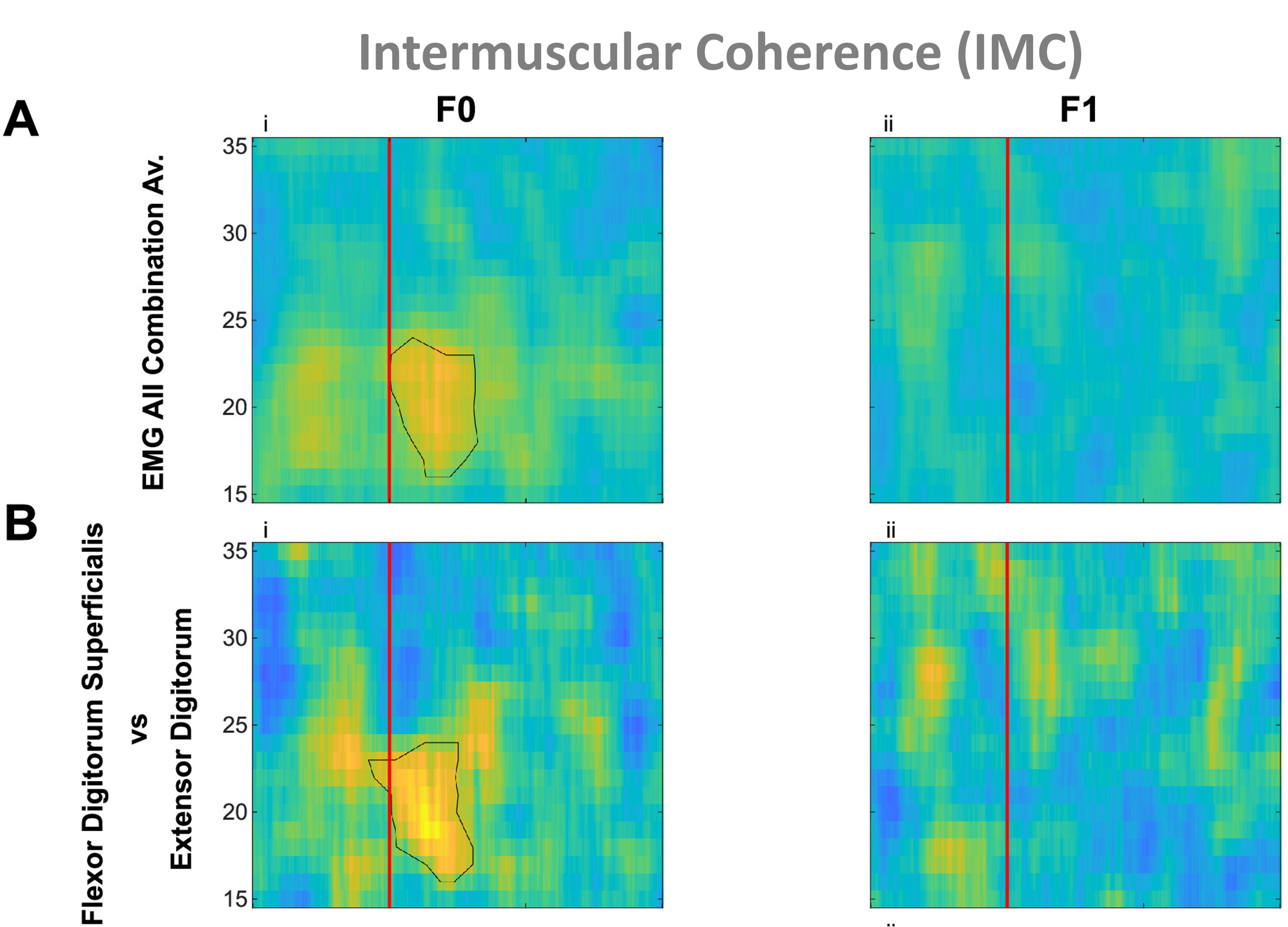Cortical beta oscillations help synchronise muscles during static posture holding in healthy motor control.
We studied how a specific pattern of brain waves (beta waves) relates to muscle activity when people make different arm movements. We discovered that beta waves help synchronize muscles during still positions, like holding an object. Beta waves are exaggerated in Parkinson's, which may lead to increased muscle synchrony. These findings help explain why people with Parkinson’s can have stiffness and difficulty with starting movements.
How cortical oscillations are involved in the coordination of functionally coupled muscles and how this is modulated by different movement contexts (static vs dynamic) remains unclear. Here, this is investigated by recording high-density electroencephalography (EEG) and electromyography (EMG) from different forearm muscles while healthy participants (n = 20) performed movement tasks (static and dynamic posture holding, and reaching) with their dominant hand. When dynamic perturbation was applied, beta band (15-35 Hz) activities in the motor cortex contralateral to the performing hand reduced during the holding phase, comparative to when there was no perturbation. During static posture holding, transient periods of increased cortical beta oscillations (beta bursts) were associated with greater corticomuscular coherence and increased phase synchrony between muscles (intermuscular coherence) in the beta frequency band compared to the no-burst period. This effect was not present when resisting dynamic perturbation. The results suggest that cortical beta bursts assist synchronisation of different muscles during static posture holding in healthy motor control, contributing to the maintenance and stabilisation of functional muscle groups. Theoretically, increased cortical beta oscillations could lead to exaggerated synchronisation in different muscles making the initialisation of movements more difficult, as observed in Parkinson's disease.

2016.Eur. J. Neurosci., 44(5):2202-13.
2021. J Neurosci, 41(40):8390-8402.
2024. J Neurol Neurosurg Psychiatry, 95(10):947-955.